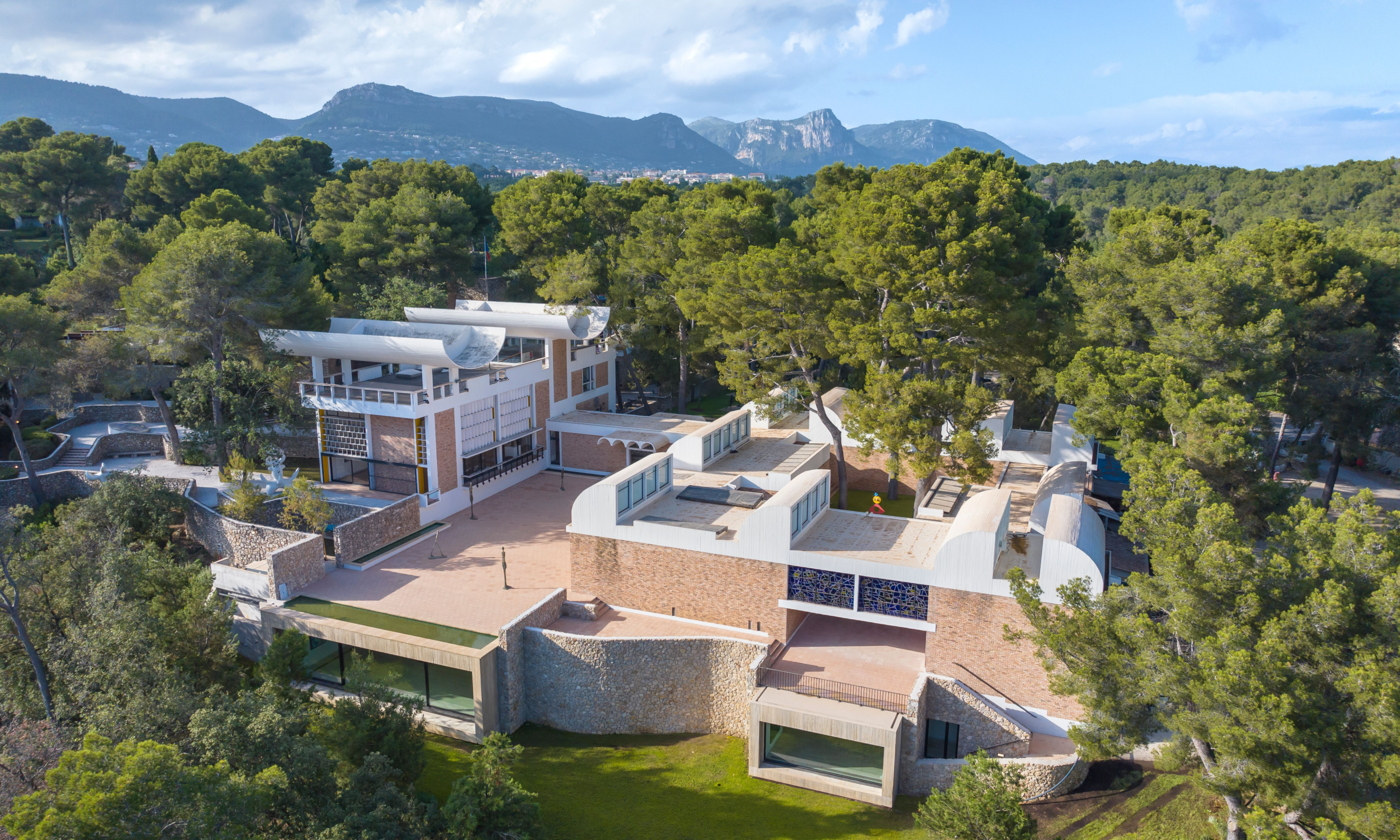Fondation Maeght © Silvio d’Ascia Architecture – architecte extension / Photo © Sergio Grazia
The Fondation Marguerite et Aimé Maeght, by the picturesque village of Saint-Paul-de-Vence in the south of France, celebrates its 60th anniversary this year. The milestone marks Maeght as Europe’s longest-standing, independent foundation, created by the art dealer couple to emulate the likes of the Barnes Foundation and The Phillips Collection in the US.
Maeght’s displays of site-specific, mostly outdoor works by 20th-century greats—including Joan Miró, Georges Braque, Alberto Giacometti and Marc Chagall—still stand as a blueprint for displays of Modern sculpture. Coinciding with its anniversary, the foundation has significantly expanded its light-filled indoor Alberto Giacometti space, a €5m project, including the addition of a room for artist books and prints, in which the Maeghts originally traded out of galleries in Cannes and Paris.
View of the extension at the Maeght Foundation with the two new lower ground windows © Glamodrama for Silvio d’Ascia / Archives Fondation Maeght
A landmark exhibition of works by two artists who were formative for the gallery and foundation—Henri Matisse and Pierre Bonnard—cements the celebrations (until 6 October). Among the approximately 300 works are four drawings by Matisse of Marguerite Maeght, whom he happened to meet in a doctor’s waiting room in Vence in 1944.
Not included, as the catalogue spells out, is Bonnard’s La marchande d’oursins (the seller of sea-urchins) (1939), a gift from the artist to Marguerite which she reluctantly had to sell to finance the foundation. “We had hoped to be able to present it in this exhibition, but unfortunately, the [private] owners did not agree to lend it…,” writes the Maeghts’ son, Adrien, still president of the foundation aged 94.
Other lenders proved more willing. Loans from the Musée d’Orsay, Paris, include Bonnard’s last painting, L’Amandier en fleurs (the almond tree in bloom) (1946-47), a work that Adrien recalls had hung in his teenage bedroom. The Nahmad family of dealer-collectors, who have a coinciding exhibition of their Miró works in the Picasso Museum in nearby Antibes (until 27 October), have lent Matisse’s Le repos de la danseuse (dancer at rest) (1942), originally shown by Galerie Maeght in Paris.
Aimé and Marguerite Maeght at the inaugural dinner of the Fondation Maeght in 1964 © Fondation Maeght archive
The foundation no longer needs to sell its art to function. The commercial gallery is still owned and run by the family in Paris but is a completely separate business, a spokesperson says. Meanwhile, Fondation Maeght is well supported privately. Its list of patrons is a who’s who of France’s corporate and individual donors, as well as international art market giants such as Christie’s, Sotheby’s and Hauser & Wirth.
Visitors also help balance the books. While the foundation was not originally conceived for the public, the Maeghts changed their mind almost immediately after opening when “there were a thousand people who wanted to see it”, according to Adrien’s daughter, Isabelle Maeght, who sits on the foundation’s board. In 2018, they brought in the respected cultural leader Nicolas Gitton as director, after a tumultuous time, charted in the 2014 book La Saga Maeght by another of Adrien’s children, Yoyo, who left the board in 2011.
Now all seems back on track, and efforts are being made to attract a younger crowd. The age for free entry has been raised from under ten to under 16. Locals are also being wooed. While the foundation can have around 1,000 visitors a day in the summer, it is considerably quieter outside of the holidays (annual visitors number around 130,000). The additional indoor space in part addresses this cause.
Meanwhile, 60 years seems a significant step in a story described by Isabelle as survival against the odds. Her grandparents moved to Saint-Paul-de-Vence in 1948, for the health of their other son, Bernard, who had leukaemia and died five years after, aged only 11. “When my uncle died, they were distraught,” Isabelle says. “It was thanks to the artists that [Marguerite and Aimé] could create something so special.”

